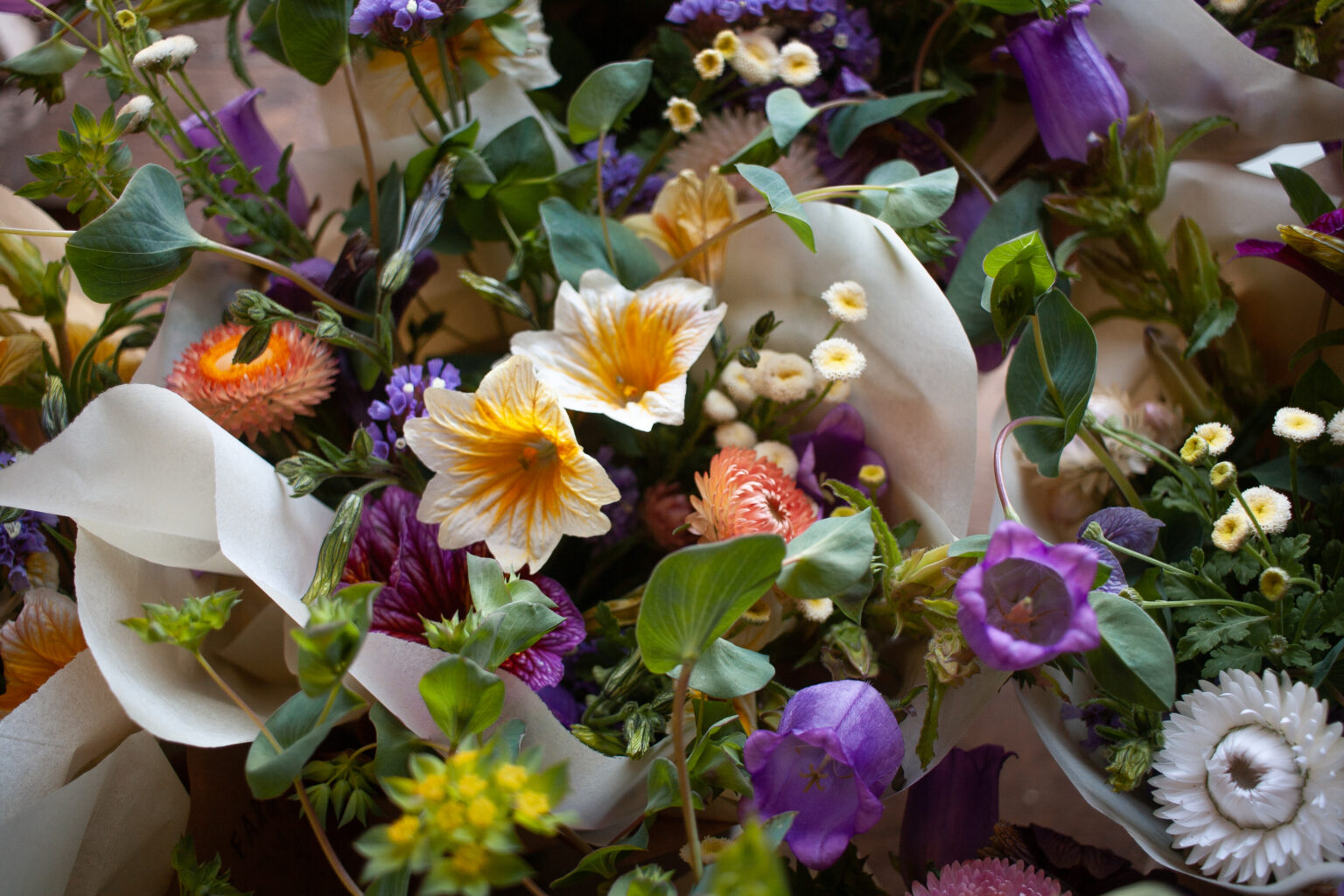
Finally! We’ve reached the point where the garden is pulsating and dripping with delicious food and beautiful flowers begging to be picked.
When a flower stem is cut, it continues to respirate, depleting its internal carbohydrate stores and eventually leading to its (inevitable) senescence. Higher temps speed up these processes and result in faster carbohydrate loss and shortened vase life. Thus, flowers are ideally cut in the morning when plants have the highest water content and the plant tissue is the coolest. Exceptions are zinnias and marigolds – studies show an increased vase life when harvested later in the day due to their higher carbohydrate status at this time.
Buckets, water, and shears should be clean because you don’t want microorganisms to plug the xylem straws of your flower stems, another cause of early flower demise. It’s said that if you wouldn’t drink out of a container, then you shouldn’t use it for flowers.
After being cut with sharp shears, flowers should go straight into a water source with all the foliage stripped below the water line, and placed in a cool, shady location. If you are designing with the flowers, allow them to rest and re-hydrate in this cool, dark place for at least one hour – ideally 12 hours – before working with them.
Flowers have vastly different vase lives; some last only 4 days, others can live in water for 2 weeks. Whatever the inherent vase life of the flower, these things will always help you get the most enjoyment out of your blooms: